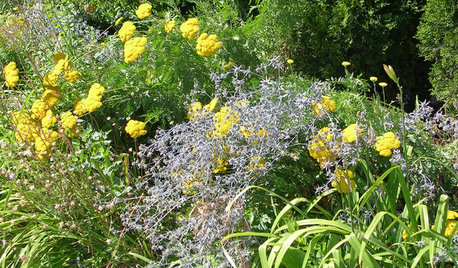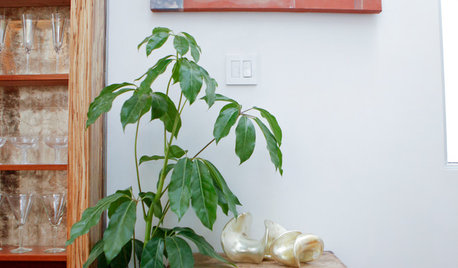Blueberry fertilizing schedule
sydsky
17 years ago
Related Stories

EDIBLE GARDENSSummer Crop: How to Grow Blueberries
Plant blueberries in spring or fall for garden beauty through three seasons — and a sweet superfood in summer
Full Story
GARDENING GUIDESGreat Design Plant: Grow Blueberries for Their Fruit and More
Eastern gardeners should consider growing blueberry plants for their delicious fruits, bee-friendly spring blooms and brilliant fall foliage
Full Story
GARDENING GUIDESHow to Switch to an Organic Landscape Plan
Ditch the chemicals for a naturally beautiful lawn and garden, using living fertilizers and other nontoxic treatments
Full Story
GARDENING GUIDESCommon Myths That May Be Hurting Your Garden
Discover the truth about fertilizer, soil, staking and more to keep your plants healthy and happy
Full Story
GARDENING GUIDESRocky Mountain Gardener: What to Do in July
Keep the party going all summer long with smart watering methods and fertilizer. Get ready for next year and order bulbs now
Full Story0

DECORATING GUIDESMeet a Houseplant That Doesn't Mind Neglect
Got better things to do than remember to water your houseplants on schedule? Schefflera will forgive and forget
Full Story
EDIBLE GARDENSHow to Add an Apple Tree to Your Edible Garden
Readily available, beautiful and fragrant, apple trees offer four-season interest along with crisp, juicy fruit
Full Story
CONTAINER GARDENSPatio-Perfect Berry Bushes Like You’ve Never Seen
Small enough for pots but offering abundant fruit, these remarkable bred berries are a boon for gardeners short on space
Full Story
FARM YOUR YARD6 Things to Know Before You Start Growing Your Own Food
It takes time and practice, but growing edibles in the suburbs or city is possible with smart prep and patience
Full Story
SHOP HOUZZShop Houzz: Save on Midcentury Sofas in Every Color
A color wheel’s worth of sofas and sectionals with modern silhouettes
Full Story0
More Discussions


fruitnut Z7 4500ft SW TX
jellyman
Related Professionals
New Bedford Landscape Architects & Landscape Designers · Springfield Landscape Contractors · Aloha Landscape Contractors · Berwyn Landscape Contractors · Broomfield Landscape Contractors · Caldwell Landscape Contractors · Conroe Landscape Contractors · Federal Way Landscape Contractors · Fort Mill Landscape Contractors · Galveston Landscape Contractors · Muttontown Landscape Contractors · North Haven Landscape Contractors · North Lauderdale Landscape Contractors · Northport Landscape Contractors · Crowley Landscape ContractorssydskyOriginal Author
mersiepoo
barberberryfarm_aol_com
djofnelson
barberberryfarm
alan haigh
tdave8666
alan haigh
tdave8666
bethesue
murkwell
bamboo_rabbit
bethesue
bethesue
Ernie
treehugger101
Bradybb WA-Zone8